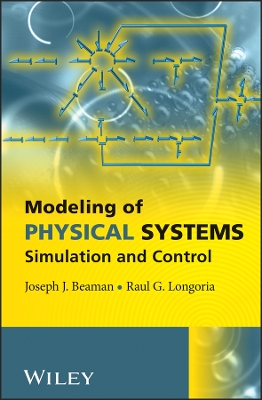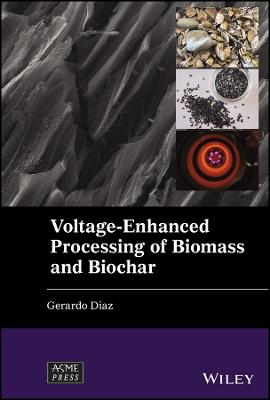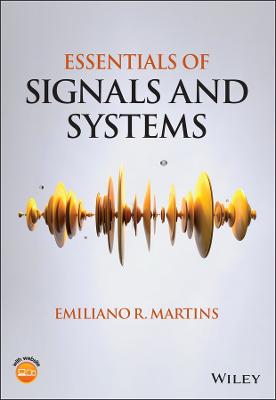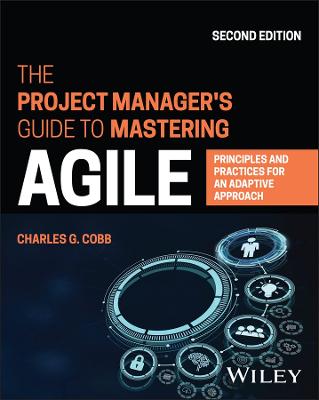Smart Grids and Green Energy Systems
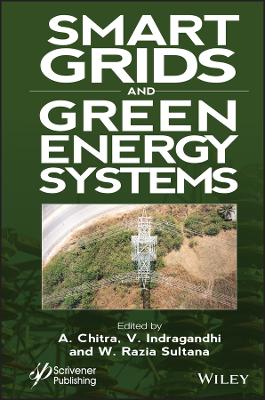 -15%
portes grátis
-15%
portes grátis
Smart Grids and Green Energy Systems
Chitra, A.; Indragandhi, V.; Sultana, W. Razia
John Wiley & Sons Inc
10/2022
352
Dura
Inglês
9781119872030
15 a 20 dias
573
Descrição não disponível.
Preface xiii
1 Studies on Enhancement of Battery Pack Efficiency Using Active Cell Balancing Techniques for Electric Vehicle Applications Through MATLAB Simulations 1
B. Akhila and S. Arockia Edwin Xavier
1.1 Introduction 2
1.2 Influence of Lithium Ion Batteries 2
1.3 Cell Balancing 3
1.3.1 Types of Cell Balancing 3
1.3.2 Passive Cell Balancing 3
1.3.3 Active Cell Balancing 3
1.3.4 Why Cell Balancing is Important 5
1.4 Block Diagram 6
1.5 SOC Control Using Passive Cell Equalization 6
1.5.1 Equalization Results 7
1.6 Voltage Control Using Active Cell Equalization 9
1.6.1 The Flyback Converter Method 9
1.6.2 The Multi-Winding Transformer Method 11
1.7 Conclusion 14
References 15
2 Evaluation and Impacts of Minimum Energy Performance Standards of Electrical Motors in India 17
S. Manoharan, G. Sureshkumaar, B. Mahalakshmi and V. Govindaraj
2.1 Introduction 18
2.2 A Review of IS 12615 Evaluation 20
2.3 A Scenario of 'MEPS' for Electric Motors From Around the World 25
2.4 Government Initiatives to Improve the Energy Efficiency of Electric Motors 29
2.4.1 National Motor Replacement Program 29
2.4.2 Obstacles to Overcome and the Path Forward 30
2.5 Conclusion 31
References 31
3 Smart Power Tracking and Power Factor Correction in a PV System 35
Karthika J., Santhosh B., Vallinayagam K., Thennavan S. and Narendran R.K.
3.1 Introduction 35
3.2 Literature Review 37
3.3 Smart Power Tracking 37
3.4 Perturb and Observe 38
3.5 Need for Power Factor Correction 40
3.6 Correction Method 40
3.7 Capacitive Bank 40
3.8 Simulation 43
3.9 Result and Output 43
3.10 Conclusion 45
References 45
4 Grid Connected Inverter for PV System Using Fuzzy Logic Controller 47
Elam Cheren S., Sakthi Ganesh R., Vijay K., Surya V. and Venkatesha R.
4.1 Introduction 47
4.2 Methodology 49
4.3 PV Module 49
4.4 DC-DC Converter 50
4.5 Mppt 51
4.6 Grid Connected PV System 55
4.7 Results and Discussion 55
4.8 Conclusion 56
References 57
5 An Experimental Investigation of Fuzzy-Based Voltage-Lift Multilevel Inverter Using Solar Photovoltaic Application 59
Gnanavel C., Johny Renoald A., Saravanan S., Vanchinathan K. and Sathishkhanna P.
5.1 Introduction 60
5.2 Proposed SVLMLI 61
5.2.1 Trigger On State 62
5.2.2 Trigger Off State 63
5.3 Design of FLC 64
5.4 FL Tuned PI Controller 66
5.5 Result and Discussion 66
5.6 Conclusion 72
References 72
6 Potentials and Challenges of Digital Twin: Toward Industry 4.0 75
M. Baranidharan, Dattatraya Kalel and R. Raja Singh
6.1 Introduction 75
6.2 Industry 4.0 77
6.3 Digital Twin Technology 79
6.3.1 Concept of Physical and Virtual Model of DTT 80
6.3.2 Digital Twin Effect on Industries-Industry 4.0 82
6.4 Potential and Challenges in Applying Digital Twin Technology 83
6.4.1 Information Technology Infrastructure 83
6.4.2 Useful Data 83
6.4.3 Trust 84
6.4.4 Expectations 84
6.4.5 Standardized Modeling 84
6.4.6 Domain Modeling 85
6.5 Research and Development Challenges 85
6.5.1 Cost 85
6.5.2 Precise Representation 86
6.5.3 Data Quality 86
6.5.4 Interoperability 86
6.5.5 Intellectual Property Protection 86
6.5.6 Cyber Security 86
6.6 Future Scope of Digital Twin Technology 87
6.7 Conclusion 87
References 88
7 Real-Time Data Acquisition System for PV Module 91
Durgesh Kumar, Ila Ashok, Sweta Kumari, Dipanjali and Lawrence Kumar
7.1 Introduction 92
7.2 Description of Instrumentation Setup 93
7.3 Experimental Setup and Data Acquisition System 96
7.4 Experimental Results 97
7.4.1 Under Uniform Illumination 98
7.4.2 Under Partial Shading Condition 100
7.5 Conclusion 101
References 102
8 Investigation of Controllers for "N" Input DC-DC Converters 105
A. Lavanya, J. Divya Navamani, Nivas Jayaseelan and A. Geetha
8.1 Introduction 105
8.2 Role of Control Technique in Multivariable System 106
8.3 Controllers Employed in Multivariable System 108
8.4 Simulation Results and Discussion 114
8.5 Conclusion 114
References 117
9 Fuzzy Logic Controlled Dual-Input DC-DC Converter for PV Applications 119
Nivas Jayaseelan, A. Lavanya1 and J. Divya Navamani
9.1 Introduction 119
9.2 d 3 Converter Topology 121
9.2.1 State-Space Model of the Converter 122
9.3 Closed-Loop Controller 126
9.4 Experimental Verification 129
9.4.1 Result Discussion 130
9.4.2 Comparative Analysis 132
9.5 Conclusions 134
References 135
10 A Smart IoT-Based Solar Power Monitoring System 137
O. Sobhana, G.C. Prabhakar, N. Amarnadh Reddy and Rashmi Kapoor
10.1 Introduction 137
10.2 Phases of System Implementation Process 138
10.2.1 Data Acquisition 139
10.2.2 Data Interface 140
10.2.3 ThingSpeak Analytics 141
10.3 Hardware Implementation and Results 142
10.4 Conclusions 145
References 145
11 Control of Multi-Input Interleaved DC-DC Boost Converter for Electric Vehicle and Renewable Energy 147
M. Bharathidasan and V. Indragandhi
11.1 Introduction 147
11.2 Proposed Converter Topology 150
11.3 Control Strategy 152
11.4 Simulation Results 153
11.5 Conclusion 155
References 156
12 Maximum Power Point Tracking Techniques for Photovoltaic Systems-A Comprehensive Review From Real-Time Implementation Perspective 159
Sudarshan B.S., Chitra A., Razia Sultana W., P.R. Chandrasekhar, Tanisha Ganguli and Ishita Sahu
12.1 Introduction 160
12.2 Conventional Electrical MPP Tracking Methods 161
12.2.1 Open-Circuit Voltage Method 162
12.2.2 Short-Circuit Current Method 163
12.2.3 Constant Voltage Controller Method 164
12.2.4 Perturb and Observe Algorithm 165
12.2.5 Incremental Conductance Algorithm 166
12.2.6 Hill-Climbing (HC) Algorithm 168
12.2.7 Other Conventional Methods 169
12.3 Evolutionary Algorithm and Artificial Intelligence-Based MPP Tracking 170
12.3.1 Fuzzy Logic Controller-Based MPP Technique 170
12.3.2 Artificial Neural Network-Based MPP Algorithm 173
12.3.3 Adaptive Neuro-Fuzzy Inference System MPP Tracking 175
12.3.4 Modified P&O Method (Variable Step Size P&O) 176
12.3.5 Particle Swarm Optimization Algorithm 178
12.3.6 Ant Colony Optimization-Based MPP Tracking 180
12.3.7 Genetic Algorithm-Based Tracking 181
12.3.8 Cuckoo Search-Based MPPT 183
12.4 Comprehensive Review on the Implementation Issues of MPPT 184
12.5 Commercial Products 184
12.6 Conclusion 187
References 188
13 Reliability Analysis Techniques of Grid-Connected PV Power Models 197
Raghavendra Rao N. S., Chitra A. and Daki Krishnachaitanya
13.1 Introduction 197
13.2 Reliability Empirical Relations and Standards 199
13.3 Reliability Estimation of Grid-Connected PV Power Models 201
13.4 Conclusion 205
References 205
14 DC Microgrid: A Review on Issues and Control 207
D. Anitha and K. Premkumar
14.1 Introduction 208
14.2 Challenges Incurred in DCMG 209
14.2.1 Difficulties in Extinguishing Arc 209
14.2.2 Lack of Adequate Grounding 210
14.2.3 Effect of Short-Circuit Fault Current and Inverter Sensitivity 210
14.2.4 Electromagnetic Interference and Inrush Currents 211
14.3 Control Strategies Adopted in DC Micro-Grid 212
14.3.1 Centralized Control 213
14.3.2 Decentralized Control 215
14.3.2.1 Droop Control With Virtual Resistance 216
14.3.2.2 Adaptive Droop Control 216
14.3.3 Distributed Control 217
14.4 Hierarchical Control 218
14.5 Conclusion 223
References 224
15 Maximizing Power Generation of a Partially Shaded PV Array Using Genetic Algorithm 231
Alice Hepzibah A., Premkumar K., Shyam D. and Aarthi B.
15.1 Introduction 232
15.2 Literature Review 232
15.3 Proposed System Design 233
15.4 Design of SEPIC Converter 234
15.5 Comparison of Different Optimization Tools 235
15.5.1 Fuzzy Logic Control 235
15.5.2 ANFIS Model 235
15.5.3 Genetic Algorithm 238
15.5.4 Incremental Conductance Method (INC) 239
15.6 Single-Phase Inverter 241
15.7 Simulation Results 241
15.8 Results and Discussion 242
15.9 Conclusion 243
References 243
16 Investigation of Super-Lift Multilevel Inverter Using Water Pump Irrigation System 247
Johny Renoald Albert, Premkumar K., Vanchinathan K., Nazar Ali A., Sagayaraj R. and Saravanan T.S.
16.1 Introduction 248
16.2 Proposed System Configuration 249
16.3 Design of Concentrator SPV Array 250
16.4 Principle of Particle Swarm Optimization 253
16.5 Result and Discussion 255
16.6 Conclusion 259
References 259
17 Analysis of Load Torque Characteristics for an Electrical Tractor 263
Gade Chandra Sekhar Reddy, Sujay Deole, Mandar More, Razia Sultana W. and Chitra A.
17.1 Introduction 263
17.2 Methodology 264
17.2.1 Traction Resistive Forces 264
17.2.2 Calculation of Rolling Resistance Force 265
17.2.3 Calculation of Grade Resistance 265
17.2.4 Calculation of Aerodynamic Force 266
17.2.5 Calculation of Acceleration Force 267
17.2.6 Contribution of Total Running Resistances 267
17.3 Dynamics of Draft Force 268
17.4 Power Train Calculation 274
17.4.1 Calculations for Field Applications 276
17.4.2 Calculation for Transport Applications 276
17.5 MATLAB Simulation and Result 277
17.6 Motor Specifications 277
17.7 Conclusion and Discussion 277
References 282
18 Comparison of Wireless Charging Compensation Topologies of Electric Vehicle 285
M. Rajalakshmi and W. Razia Sultana
18.1 Introduction 286
18.2 Types of Electric Vehicle Wireless Charging Systems (EVWCS) 287
18.2.1 Capacitive Wireless Charging System (CWCS) 287
18.2.2 Permanent Magnet Gear Wireless Charging System (PMWC) 289
18.2.3 Inductive Wireless Charging System (IWC) 289
18.2.4 Resonant Inductive Wireless Charging System (RIWC) 289
18.3 Classification of Compensation Topologies 289
18.4 Simulation Diagram 292
18.4.1 Series-Series 292
18.4.2 Parallel-Series 293
18.5 Design Parameters of Circuit Used in Simulation 294
18.6 Results and Discussion 294
18.6.1 Series-Series Topology 294
18.6.2 Parallel-Series Topology Waveforms 296
18.7 Conclusion 298
References 299
19 Analysis of PV System in Grid Connected and Islanded Modes of Operation 301
Aditya Ghatak, Tushar Pandit, Chitra A. and Razia Sultana W.
19.1 Introduction 301
19.2 Grid Connected Mode 302
19.2.1 DC Side Control 306
19.2.2 AC Side Control 306
19.3 Islanded Mode 308
19.4 Results and Discussion 310
19.5 Conclusion 314
References 314
Index 317
1 Studies on Enhancement of Battery Pack Efficiency Using Active Cell Balancing Techniques for Electric Vehicle Applications Through MATLAB Simulations 1
B. Akhila and S. Arockia Edwin Xavier
1.1 Introduction 2
1.2 Influence of Lithium Ion Batteries 2
1.3 Cell Balancing 3
1.3.1 Types of Cell Balancing 3
1.3.2 Passive Cell Balancing 3
1.3.3 Active Cell Balancing 3
1.3.4 Why Cell Balancing is Important 5
1.4 Block Diagram 6
1.5 SOC Control Using Passive Cell Equalization 6
1.5.1 Equalization Results 7
1.6 Voltage Control Using Active Cell Equalization 9
1.6.1 The Flyback Converter Method 9
1.6.2 The Multi-Winding Transformer Method 11
1.7 Conclusion 14
References 15
2 Evaluation and Impacts of Minimum Energy Performance Standards of Electrical Motors in India 17
S. Manoharan, G. Sureshkumaar, B. Mahalakshmi and V. Govindaraj
2.1 Introduction 18
2.2 A Review of IS 12615 Evaluation 20
2.3 A Scenario of 'MEPS' for Electric Motors From Around the World 25
2.4 Government Initiatives to Improve the Energy Efficiency of Electric Motors 29
2.4.1 National Motor Replacement Program 29
2.4.2 Obstacles to Overcome and the Path Forward 30
2.5 Conclusion 31
References 31
3 Smart Power Tracking and Power Factor Correction in a PV System 35
Karthika J., Santhosh B., Vallinayagam K., Thennavan S. and Narendran R.K.
3.1 Introduction 35
3.2 Literature Review 37
3.3 Smart Power Tracking 37
3.4 Perturb and Observe 38
3.5 Need for Power Factor Correction 40
3.6 Correction Method 40
3.7 Capacitive Bank 40
3.8 Simulation 43
3.9 Result and Output 43
3.10 Conclusion 45
References 45
4 Grid Connected Inverter for PV System Using Fuzzy Logic Controller 47
Elam Cheren S., Sakthi Ganesh R., Vijay K., Surya V. and Venkatesha R.
4.1 Introduction 47
4.2 Methodology 49
4.3 PV Module 49
4.4 DC-DC Converter 50
4.5 Mppt 51
4.6 Grid Connected PV System 55
4.7 Results and Discussion 55
4.8 Conclusion 56
References 57
5 An Experimental Investigation of Fuzzy-Based Voltage-Lift Multilevel Inverter Using Solar Photovoltaic Application 59
Gnanavel C., Johny Renoald A., Saravanan S., Vanchinathan K. and Sathishkhanna P.
5.1 Introduction 60
5.2 Proposed SVLMLI 61
5.2.1 Trigger On State 62
5.2.2 Trigger Off State 63
5.3 Design of FLC 64
5.4 FL Tuned PI Controller 66
5.5 Result and Discussion 66
5.6 Conclusion 72
References 72
6 Potentials and Challenges of Digital Twin: Toward Industry 4.0 75
M. Baranidharan, Dattatraya Kalel and R. Raja Singh
6.1 Introduction 75
6.2 Industry 4.0 77
6.3 Digital Twin Technology 79
6.3.1 Concept of Physical and Virtual Model of DTT 80
6.3.2 Digital Twin Effect on Industries-Industry 4.0 82
6.4 Potential and Challenges in Applying Digital Twin Technology 83
6.4.1 Information Technology Infrastructure 83
6.4.2 Useful Data 83
6.4.3 Trust 84
6.4.4 Expectations 84
6.4.5 Standardized Modeling 84
6.4.6 Domain Modeling 85
6.5 Research and Development Challenges 85
6.5.1 Cost 85
6.5.2 Precise Representation 86
6.5.3 Data Quality 86
6.5.4 Interoperability 86
6.5.5 Intellectual Property Protection 86
6.5.6 Cyber Security 86
6.6 Future Scope of Digital Twin Technology 87
6.7 Conclusion 87
References 88
7 Real-Time Data Acquisition System for PV Module 91
Durgesh Kumar, Ila Ashok, Sweta Kumari, Dipanjali and Lawrence Kumar
7.1 Introduction 92
7.2 Description of Instrumentation Setup 93
7.3 Experimental Setup and Data Acquisition System 96
7.4 Experimental Results 97
7.4.1 Under Uniform Illumination 98
7.4.2 Under Partial Shading Condition 100
7.5 Conclusion 101
References 102
8 Investigation of Controllers for "N" Input DC-DC Converters 105
A. Lavanya, J. Divya Navamani, Nivas Jayaseelan and A. Geetha
8.1 Introduction 105
8.2 Role of Control Technique in Multivariable System 106
8.3 Controllers Employed in Multivariable System 108
8.4 Simulation Results and Discussion 114
8.5 Conclusion 114
References 117
9 Fuzzy Logic Controlled Dual-Input DC-DC Converter for PV Applications 119
Nivas Jayaseelan, A. Lavanya1 and J. Divya Navamani
9.1 Introduction 119
9.2 d 3 Converter Topology 121
9.2.1 State-Space Model of the Converter 122
9.3 Closed-Loop Controller 126
9.4 Experimental Verification 129
9.4.1 Result Discussion 130
9.4.2 Comparative Analysis 132
9.5 Conclusions 134
References 135
10 A Smart IoT-Based Solar Power Monitoring System 137
O. Sobhana, G.C. Prabhakar, N. Amarnadh Reddy and Rashmi Kapoor
10.1 Introduction 137
10.2 Phases of System Implementation Process 138
10.2.1 Data Acquisition 139
10.2.2 Data Interface 140
10.2.3 ThingSpeak Analytics 141
10.3 Hardware Implementation and Results 142
10.4 Conclusions 145
References 145
11 Control of Multi-Input Interleaved DC-DC Boost Converter for Electric Vehicle and Renewable Energy 147
M. Bharathidasan and V. Indragandhi
11.1 Introduction 147
11.2 Proposed Converter Topology 150
11.3 Control Strategy 152
11.4 Simulation Results 153
11.5 Conclusion 155
References 156
12 Maximum Power Point Tracking Techniques for Photovoltaic Systems-A Comprehensive Review From Real-Time Implementation Perspective 159
Sudarshan B.S., Chitra A., Razia Sultana W., P.R. Chandrasekhar, Tanisha Ganguli and Ishita Sahu
12.1 Introduction 160
12.2 Conventional Electrical MPP Tracking Methods 161
12.2.1 Open-Circuit Voltage Method 162
12.2.2 Short-Circuit Current Method 163
12.2.3 Constant Voltage Controller Method 164
12.2.4 Perturb and Observe Algorithm 165
12.2.5 Incremental Conductance Algorithm 166
12.2.6 Hill-Climbing (HC) Algorithm 168
12.2.7 Other Conventional Methods 169
12.3 Evolutionary Algorithm and Artificial Intelligence-Based MPP Tracking 170
12.3.1 Fuzzy Logic Controller-Based MPP Technique 170
12.3.2 Artificial Neural Network-Based MPP Algorithm 173
12.3.3 Adaptive Neuro-Fuzzy Inference System MPP Tracking 175
12.3.4 Modified P&O Method (Variable Step Size P&O) 176
12.3.5 Particle Swarm Optimization Algorithm 178
12.3.6 Ant Colony Optimization-Based MPP Tracking 180
12.3.7 Genetic Algorithm-Based Tracking 181
12.3.8 Cuckoo Search-Based MPPT 183
12.4 Comprehensive Review on the Implementation Issues of MPPT 184
12.5 Commercial Products 184
12.6 Conclusion 187
References 188
13 Reliability Analysis Techniques of Grid-Connected PV Power Models 197
Raghavendra Rao N. S., Chitra A. and Daki Krishnachaitanya
13.1 Introduction 197
13.2 Reliability Empirical Relations and Standards 199
13.3 Reliability Estimation of Grid-Connected PV Power Models 201
13.4 Conclusion 205
References 205
14 DC Microgrid: A Review on Issues and Control 207
D. Anitha and K. Premkumar
14.1 Introduction 208
14.2 Challenges Incurred in DCMG 209
14.2.1 Difficulties in Extinguishing Arc 209
14.2.2 Lack of Adequate Grounding 210
14.2.3 Effect of Short-Circuit Fault Current and Inverter Sensitivity 210
14.2.4 Electromagnetic Interference and Inrush Currents 211
14.3 Control Strategies Adopted in DC Micro-Grid 212
14.3.1 Centralized Control 213
14.3.2 Decentralized Control 215
14.3.2.1 Droop Control With Virtual Resistance 216
14.3.2.2 Adaptive Droop Control 216
14.3.3 Distributed Control 217
14.4 Hierarchical Control 218
14.5 Conclusion 223
References 224
15 Maximizing Power Generation of a Partially Shaded PV Array Using Genetic Algorithm 231
Alice Hepzibah A., Premkumar K., Shyam D. and Aarthi B.
15.1 Introduction 232
15.2 Literature Review 232
15.3 Proposed System Design 233
15.4 Design of SEPIC Converter 234
15.5 Comparison of Different Optimization Tools 235
15.5.1 Fuzzy Logic Control 235
15.5.2 ANFIS Model 235
15.5.3 Genetic Algorithm 238
15.5.4 Incremental Conductance Method (INC) 239
15.6 Single-Phase Inverter 241
15.7 Simulation Results 241
15.8 Results and Discussion 242
15.9 Conclusion 243
References 243
16 Investigation of Super-Lift Multilevel Inverter Using Water Pump Irrigation System 247
Johny Renoald Albert, Premkumar K., Vanchinathan K., Nazar Ali A., Sagayaraj R. and Saravanan T.S.
16.1 Introduction 248
16.2 Proposed System Configuration 249
16.3 Design of Concentrator SPV Array 250
16.4 Principle of Particle Swarm Optimization 253
16.5 Result and Discussion 255
16.6 Conclusion 259
References 259
17 Analysis of Load Torque Characteristics for an Electrical Tractor 263
Gade Chandra Sekhar Reddy, Sujay Deole, Mandar More, Razia Sultana W. and Chitra A.
17.1 Introduction 263
17.2 Methodology 264
17.2.1 Traction Resistive Forces 264
17.2.2 Calculation of Rolling Resistance Force 265
17.2.3 Calculation of Grade Resistance 265
17.2.4 Calculation of Aerodynamic Force 266
17.2.5 Calculation of Acceleration Force 267
17.2.6 Contribution of Total Running Resistances 267
17.3 Dynamics of Draft Force 268
17.4 Power Train Calculation 274
17.4.1 Calculations for Field Applications 276
17.4.2 Calculation for Transport Applications 276
17.5 MATLAB Simulation and Result 277
17.6 Motor Specifications 277
17.7 Conclusion and Discussion 277
References 282
18 Comparison of Wireless Charging Compensation Topologies of Electric Vehicle 285
M. Rajalakshmi and W. Razia Sultana
18.1 Introduction 286
18.2 Types of Electric Vehicle Wireless Charging Systems (EVWCS) 287
18.2.1 Capacitive Wireless Charging System (CWCS) 287
18.2.2 Permanent Magnet Gear Wireless Charging System (PMWC) 289
18.2.3 Inductive Wireless Charging System (IWC) 289
18.2.4 Resonant Inductive Wireless Charging System (RIWC) 289
18.3 Classification of Compensation Topologies 289
18.4 Simulation Diagram 292
18.4.1 Series-Series 292
18.4.2 Parallel-Series 293
18.5 Design Parameters of Circuit Used in Simulation 294
18.6 Results and Discussion 294
18.6.1 Series-Series Topology 294
18.6.2 Parallel-Series Topology Waveforms 296
18.7 Conclusion 298
References 299
19 Analysis of PV System in Grid Connected and Islanded Modes of Operation 301
Aditya Ghatak, Tushar Pandit, Chitra A. and Razia Sultana W.
19.1 Introduction 301
19.2 Grid Connected Mode 302
19.2.1 DC Side Control 306
19.2.2 AC Side Control 306
19.3 Islanded Mode 308
19.4 Results and Discussion 310
19.5 Conclusion 314
References 314
Index 317
Este título pertence ao(s) assunto(s) indicados(s). Para ver outros títulos clique no assunto desejado.
<p>Smart grid; Power quality; Power converters; IoT; Green drives; Green Electric vehicles; Renewable Energy Sources; Wind Energy; Fuel cell; Solar PV; Maximum Power Point Tracking; Automation in smart grid; Sensors; Reliability; Fault analysis; Soft computing; Embedded Control; Intelligent Techniques; Converter Modeling; Converter Analysis; Control of Green drives; Integration of green sources in smart grid; Industrial Automation; Efficient Energy utilization; Power system; Power factor Improvement; Power Filters; V2G; G2V; Grid integration; Reactive power control; PQ control; Inverter; Multilevel Inverters</p>
Preface xiii
1 Studies on Enhancement of Battery Pack Efficiency Using Active Cell Balancing Techniques for Electric Vehicle Applications Through MATLAB Simulations 1
B. Akhila and S. Arockia Edwin Xavier
1.1 Introduction 2
1.2 Influence of Lithium Ion Batteries 2
1.3 Cell Balancing 3
1.3.1 Types of Cell Balancing 3
1.3.2 Passive Cell Balancing 3
1.3.3 Active Cell Balancing 3
1.3.4 Why Cell Balancing is Important 5
1.4 Block Diagram 6
1.5 SOC Control Using Passive Cell Equalization 6
1.5.1 Equalization Results 7
1.6 Voltage Control Using Active Cell Equalization 9
1.6.1 The Flyback Converter Method 9
1.6.2 The Multi-Winding Transformer Method 11
1.7 Conclusion 14
References 15
2 Evaluation and Impacts of Minimum Energy Performance Standards of Electrical Motors in India 17
S. Manoharan, G. Sureshkumaar, B. Mahalakshmi and V. Govindaraj
2.1 Introduction 18
2.2 A Review of IS 12615 Evaluation 20
2.3 A Scenario of 'MEPS' for Electric Motors From Around the World 25
2.4 Government Initiatives to Improve the Energy Efficiency of Electric Motors 29
2.4.1 National Motor Replacement Program 29
2.4.2 Obstacles to Overcome and the Path Forward 30
2.5 Conclusion 31
References 31
3 Smart Power Tracking and Power Factor Correction in a PV System 35
Karthika J., Santhosh B., Vallinayagam K., Thennavan S. and Narendran R.K.
3.1 Introduction 35
3.2 Literature Review 37
3.3 Smart Power Tracking 37
3.4 Perturb and Observe 38
3.5 Need for Power Factor Correction 40
3.6 Correction Method 40
3.7 Capacitive Bank 40
3.8 Simulation 43
3.9 Result and Output 43
3.10 Conclusion 45
References 45
4 Grid Connected Inverter for PV System Using Fuzzy Logic Controller 47
Elam Cheren S., Sakthi Ganesh R., Vijay K., Surya V. and Venkatesha R.
4.1 Introduction 47
4.2 Methodology 49
4.3 PV Module 49
4.4 DC-DC Converter 50
4.5 Mppt 51
4.6 Grid Connected PV System 55
4.7 Results and Discussion 55
4.8 Conclusion 56
References 57
5 An Experimental Investigation of Fuzzy-Based Voltage-Lift Multilevel Inverter Using Solar Photovoltaic Application 59
Gnanavel C., Johny Renoald A., Saravanan S., Vanchinathan K. and Sathishkhanna P.
5.1 Introduction 60
5.2 Proposed SVLMLI 61
5.2.1 Trigger On State 62
5.2.2 Trigger Off State 63
5.3 Design of FLC 64
5.4 FL Tuned PI Controller 66
5.5 Result and Discussion 66
5.6 Conclusion 72
References 72
6 Potentials and Challenges of Digital Twin: Toward Industry 4.0 75
M. Baranidharan, Dattatraya Kalel and R. Raja Singh
6.1 Introduction 75
6.2 Industry 4.0 77
6.3 Digital Twin Technology 79
6.3.1 Concept of Physical and Virtual Model of DTT 80
6.3.2 Digital Twin Effect on Industries-Industry 4.0 82
6.4 Potential and Challenges in Applying Digital Twin Technology 83
6.4.1 Information Technology Infrastructure 83
6.4.2 Useful Data 83
6.4.3 Trust 84
6.4.4 Expectations 84
6.4.5 Standardized Modeling 84
6.4.6 Domain Modeling 85
6.5 Research and Development Challenges 85
6.5.1 Cost 85
6.5.2 Precise Representation 86
6.5.3 Data Quality 86
6.5.4 Interoperability 86
6.5.5 Intellectual Property Protection 86
6.5.6 Cyber Security 86
6.6 Future Scope of Digital Twin Technology 87
6.7 Conclusion 87
References 88
7 Real-Time Data Acquisition System for PV Module 91
Durgesh Kumar, Ila Ashok, Sweta Kumari, Dipanjali and Lawrence Kumar
7.1 Introduction 92
7.2 Description of Instrumentation Setup 93
7.3 Experimental Setup and Data Acquisition System 96
7.4 Experimental Results 97
7.4.1 Under Uniform Illumination 98
7.4.2 Under Partial Shading Condition 100
7.5 Conclusion 101
References 102
8 Investigation of Controllers for "N" Input DC-DC Converters 105
A. Lavanya, J. Divya Navamani, Nivas Jayaseelan and A. Geetha
8.1 Introduction 105
8.2 Role of Control Technique in Multivariable System 106
8.3 Controllers Employed in Multivariable System 108
8.4 Simulation Results and Discussion 114
8.5 Conclusion 114
References 117
9 Fuzzy Logic Controlled Dual-Input DC-DC Converter for PV Applications 119
Nivas Jayaseelan, A. Lavanya1 and J. Divya Navamani
9.1 Introduction 119
9.2 d 3 Converter Topology 121
9.2.1 State-Space Model of the Converter 122
9.3 Closed-Loop Controller 126
9.4 Experimental Verification 129
9.4.1 Result Discussion 130
9.4.2 Comparative Analysis 132
9.5 Conclusions 134
References 135
10 A Smart IoT-Based Solar Power Monitoring System 137
O. Sobhana, G.C. Prabhakar, N. Amarnadh Reddy and Rashmi Kapoor
10.1 Introduction 137
10.2 Phases of System Implementation Process 138
10.2.1 Data Acquisition 139
10.2.2 Data Interface 140
10.2.3 ThingSpeak Analytics 141
10.3 Hardware Implementation and Results 142
10.4 Conclusions 145
References 145
11 Control of Multi-Input Interleaved DC-DC Boost Converter for Electric Vehicle and Renewable Energy 147
M. Bharathidasan and V. Indragandhi
11.1 Introduction 147
11.2 Proposed Converter Topology 150
11.3 Control Strategy 152
11.4 Simulation Results 153
11.5 Conclusion 155
References 156
12 Maximum Power Point Tracking Techniques for Photovoltaic Systems-A Comprehensive Review From Real-Time Implementation Perspective 159
Sudarshan B.S., Chitra A., Razia Sultana W., P.R. Chandrasekhar, Tanisha Ganguli and Ishita Sahu
12.1 Introduction 160
12.2 Conventional Electrical MPP Tracking Methods 161
12.2.1 Open-Circuit Voltage Method 162
12.2.2 Short-Circuit Current Method 163
12.2.3 Constant Voltage Controller Method 164
12.2.4 Perturb and Observe Algorithm 165
12.2.5 Incremental Conductance Algorithm 166
12.2.6 Hill-Climbing (HC) Algorithm 168
12.2.7 Other Conventional Methods 169
12.3 Evolutionary Algorithm and Artificial Intelligence-Based MPP Tracking 170
12.3.1 Fuzzy Logic Controller-Based MPP Technique 170
12.3.2 Artificial Neural Network-Based MPP Algorithm 173
12.3.3 Adaptive Neuro-Fuzzy Inference System MPP Tracking 175
12.3.4 Modified P&O Method (Variable Step Size P&O) 176
12.3.5 Particle Swarm Optimization Algorithm 178
12.3.6 Ant Colony Optimization-Based MPP Tracking 180
12.3.7 Genetic Algorithm-Based Tracking 181
12.3.8 Cuckoo Search-Based MPPT 183
12.4 Comprehensive Review on the Implementation Issues of MPPT 184
12.5 Commercial Products 184
12.6 Conclusion 187
References 188
13 Reliability Analysis Techniques of Grid-Connected PV Power Models 197
Raghavendra Rao N. S., Chitra A. and Daki Krishnachaitanya
13.1 Introduction 197
13.2 Reliability Empirical Relations and Standards 199
13.3 Reliability Estimation of Grid-Connected PV Power Models 201
13.4 Conclusion 205
References 205
14 DC Microgrid: A Review on Issues and Control 207
D. Anitha and K. Premkumar
14.1 Introduction 208
14.2 Challenges Incurred in DCMG 209
14.2.1 Difficulties in Extinguishing Arc 209
14.2.2 Lack of Adequate Grounding 210
14.2.3 Effect of Short-Circuit Fault Current and Inverter Sensitivity 210
14.2.4 Electromagnetic Interference and Inrush Currents 211
14.3 Control Strategies Adopted in DC Micro-Grid 212
14.3.1 Centralized Control 213
14.3.2 Decentralized Control 215
14.3.2.1 Droop Control With Virtual Resistance 216
14.3.2.2 Adaptive Droop Control 216
14.3.3 Distributed Control 217
14.4 Hierarchical Control 218
14.5 Conclusion 223
References 224
15 Maximizing Power Generation of a Partially Shaded PV Array Using Genetic Algorithm 231
Alice Hepzibah A., Premkumar K., Shyam D. and Aarthi B.
15.1 Introduction 232
15.2 Literature Review 232
15.3 Proposed System Design 233
15.4 Design of SEPIC Converter 234
15.5 Comparison of Different Optimization Tools 235
15.5.1 Fuzzy Logic Control 235
15.5.2 ANFIS Model 235
15.5.3 Genetic Algorithm 238
15.5.4 Incremental Conductance Method (INC) 239
15.6 Single-Phase Inverter 241
15.7 Simulation Results 241
15.8 Results and Discussion 242
15.9 Conclusion 243
References 243
16 Investigation of Super-Lift Multilevel Inverter Using Water Pump Irrigation System 247
Johny Renoald Albert, Premkumar K., Vanchinathan K., Nazar Ali A., Sagayaraj R. and Saravanan T.S.
16.1 Introduction 248
16.2 Proposed System Configuration 249
16.3 Design of Concentrator SPV Array 250
16.4 Principle of Particle Swarm Optimization 253
16.5 Result and Discussion 255
16.6 Conclusion 259
References 259
17 Analysis of Load Torque Characteristics for an Electrical Tractor 263
Gade Chandra Sekhar Reddy, Sujay Deole, Mandar More, Razia Sultana W. and Chitra A.
17.1 Introduction 263
17.2 Methodology 264
17.2.1 Traction Resistive Forces 264
17.2.2 Calculation of Rolling Resistance Force 265
17.2.3 Calculation of Grade Resistance 265
17.2.4 Calculation of Aerodynamic Force 266
17.2.5 Calculation of Acceleration Force 267
17.2.6 Contribution of Total Running Resistances 267
17.3 Dynamics of Draft Force 268
17.4 Power Train Calculation 274
17.4.1 Calculations for Field Applications 276
17.4.2 Calculation for Transport Applications 276
17.5 MATLAB Simulation and Result 277
17.6 Motor Specifications 277
17.7 Conclusion and Discussion 277
References 282
18 Comparison of Wireless Charging Compensation Topologies of Electric Vehicle 285
M. Rajalakshmi and W. Razia Sultana
18.1 Introduction 286
18.2 Types of Electric Vehicle Wireless Charging Systems (EVWCS) 287
18.2.1 Capacitive Wireless Charging System (CWCS) 287
18.2.2 Permanent Magnet Gear Wireless Charging System (PMWC) 289
18.2.3 Inductive Wireless Charging System (IWC) 289
18.2.4 Resonant Inductive Wireless Charging System (RIWC) 289
18.3 Classification of Compensation Topologies 289
18.4 Simulation Diagram 292
18.4.1 Series-Series 292
18.4.2 Parallel-Series 293
18.5 Design Parameters of Circuit Used in Simulation 294
18.6 Results and Discussion 294
18.6.1 Series-Series Topology 294
18.6.2 Parallel-Series Topology Waveforms 296
18.7 Conclusion 298
References 299
19 Analysis of PV System in Grid Connected and Islanded Modes of Operation 301
Aditya Ghatak, Tushar Pandit, Chitra A. and Razia Sultana W.
19.1 Introduction 301
19.2 Grid Connected Mode 302
19.2.1 DC Side Control 306
19.2.2 AC Side Control 306
19.3 Islanded Mode 308
19.4 Results and Discussion 310
19.5 Conclusion 314
References 314
Index 317
1 Studies on Enhancement of Battery Pack Efficiency Using Active Cell Balancing Techniques for Electric Vehicle Applications Through MATLAB Simulations 1
B. Akhila and S. Arockia Edwin Xavier
1.1 Introduction 2
1.2 Influence of Lithium Ion Batteries 2
1.3 Cell Balancing 3
1.3.1 Types of Cell Balancing 3
1.3.2 Passive Cell Balancing 3
1.3.3 Active Cell Balancing 3
1.3.4 Why Cell Balancing is Important 5
1.4 Block Diagram 6
1.5 SOC Control Using Passive Cell Equalization 6
1.5.1 Equalization Results 7
1.6 Voltage Control Using Active Cell Equalization 9
1.6.1 The Flyback Converter Method 9
1.6.2 The Multi-Winding Transformer Method 11
1.7 Conclusion 14
References 15
2 Evaluation and Impacts of Minimum Energy Performance Standards of Electrical Motors in India 17
S. Manoharan, G. Sureshkumaar, B. Mahalakshmi and V. Govindaraj
2.1 Introduction 18
2.2 A Review of IS 12615 Evaluation 20
2.3 A Scenario of 'MEPS' for Electric Motors From Around the World 25
2.4 Government Initiatives to Improve the Energy Efficiency of Electric Motors 29
2.4.1 National Motor Replacement Program 29
2.4.2 Obstacles to Overcome and the Path Forward 30
2.5 Conclusion 31
References 31
3 Smart Power Tracking and Power Factor Correction in a PV System 35
Karthika J., Santhosh B., Vallinayagam K., Thennavan S. and Narendran R.K.
3.1 Introduction 35
3.2 Literature Review 37
3.3 Smart Power Tracking 37
3.4 Perturb and Observe 38
3.5 Need for Power Factor Correction 40
3.6 Correction Method 40
3.7 Capacitive Bank 40
3.8 Simulation 43
3.9 Result and Output 43
3.10 Conclusion 45
References 45
4 Grid Connected Inverter for PV System Using Fuzzy Logic Controller 47
Elam Cheren S., Sakthi Ganesh R., Vijay K., Surya V. and Venkatesha R.
4.1 Introduction 47
4.2 Methodology 49
4.3 PV Module 49
4.4 DC-DC Converter 50
4.5 Mppt 51
4.6 Grid Connected PV System 55
4.7 Results and Discussion 55
4.8 Conclusion 56
References 57
5 An Experimental Investigation of Fuzzy-Based Voltage-Lift Multilevel Inverter Using Solar Photovoltaic Application 59
Gnanavel C., Johny Renoald A., Saravanan S., Vanchinathan K. and Sathishkhanna P.
5.1 Introduction 60
5.2 Proposed SVLMLI 61
5.2.1 Trigger On State 62
5.2.2 Trigger Off State 63
5.3 Design of FLC 64
5.4 FL Tuned PI Controller 66
5.5 Result and Discussion 66
5.6 Conclusion 72
References 72
6 Potentials and Challenges of Digital Twin: Toward Industry 4.0 75
M. Baranidharan, Dattatraya Kalel and R. Raja Singh
6.1 Introduction 75
6.2 Industry 4.0 77
6.3 Digital Twin Technology 79
6.3.1 Concept of Physical and Virtual Model of DTT 80
6.3.2 Digital Twin Effect on Industries-Industry 4.0 82
6.4 Potential and Challenges in Applying Digital Twin Technology 83
6.4.1 Information Technology Infrastructure 83
6.4.2 Useful Data 83
6.4.3 Trust 84
6.4.4 Expectations 84
6.4.5 Standardized Modeling 84
6.4.6 Domain Modeling 85
6.5 Research and Development Challenges 85
6.5.1 Cost 85
6.5.2 Precise Representation 86
6.5.3 Data Quality 86
6.5.4 Interoperability 86
6.5.5 Intellectual Property Protection 86
6.5.6 Cyber Security 86
6.6 Future Scope of Digital Twin Technology 87
6.7 Conclusion 87
References 88
7 Real-Time Data Acquisition System for PV Module 91
Durgesh Kumar, Ila Ashok, Sweta Kumari, Dipanjali and Lawrence Kumar
7.1 Introduction 92
7.2 Description of Instrumentation Setup 93
7.3 Experimental Setup and Data Acquisition System 96
7.4 Experimental Results 97
7.4.1 Under Uniform Illumination 98
7.4.2 Under Partial Shading Condition 100
7.5 Conclusion 101
References 102
8 Investigation of Controllers for "N" Input DC-DC Converters 105
A. Lavanya, J. Divya Navamani, Nivas Jayaseelan and A. Geetha
8.1 Introduction 105
8.2 Role of Control Technique in Multivariable System 106
8.3 Controllers Employed in Multivariable System 108
8.4 Simulation Results and Discussion 114
8.5 Conclusion 114
References 117
9 Fuzzy Logic Controlled Dual-Input DC-DC Converter for PV Applications 119
Nivas Jayaseelan, A. Lavanya1 and J. Divya Navamani
9.1 Introduction 119
9.2 d 3 Converter Topology 121
9.2.1 State-Space Model of the Converter 122
9.3 Closed-Loop Controller 126
9.4 Experimental Verification 129
9.4.1 Result Discussion 130
9.4.2 Comparative Analysis 132
9.5 Conclusions 134
References 135
10 A Smart IoT-Based Solar Power Monitoring System 137
O. Sobhana, G.C. Prabhakar, N. Amarnadh Reddy and Rashmi Kapoor
10.1 Introduction 137
10.2 Phases of System Implementation Process 138
10.2.1 Data Acquisition 139
10.2.2 Data Interface 140
10.2.3 ThingSpeak Analytics 141
10.3 Hardware Implementation and Results 142
10.4 Conclusions 145
References 145
11 Control of Multi-Input Interleaved DC-DC Boost Converter for Electric Vehicle and Renewable Energy 147
M. Bharathidasan and V. Indragandhi
11.1 Introduction 147
11.2 Proposed Converter Topology 150
11.3 Control Strategy 152
11.4 Simulation Results 153
11.5 Conclusion 155
References 156
12 Maximum Power Point Tracking Techniques for Photovoltaic Systems-A Comprehensive Review From Real-Time Implementation Perspective 159
Sudarshan B.S., Chitra A., Razia Sultana W., P.R. Chandrasekhar, Tanisha Ganguli and Ishita Sahu
12.1 Introduction 160
12.2 Conventional Electrical MPP Tracking Methods 161
12.2.1 Open-Circuit Voltage Method 162
12.2.2 Short-Circuit Current Method 163
12.2.3 Constant Voltage Controller Method 164
12.2.4 Perturb and Observe Algorithm 165
12.2.5 Incremental Conductance Algorithm 166
12.2.6 Hill-Climbing (HC) Algorithm 168
12.2.7 Other Conventional Methods 169
12.3 Evolutionary Algorithm and Artificial Intelligence-Based MPP Tracking 170
12.3.1 Fuzzy Logic Controller-Based MPP Technique 170
12.3.2 Artificial Neural Network-Based MPP Algorithm 173
12.3.3 Adaptive Neuro-Fuzzy Inference System MPP Tracking 175
12.3.4 Modified P&O Method (Variable Step Size P&O) 176
12.3.5 Particle Swarm Optimization Algorithm 178
12.3.6 Ant Colony Optimization-Based MPP Tracking 180
12.3.7 Genetic Algorithm-Based Tracking 181
12.3.8 Cuckoo Search-Based MPPT 183
12.4 Comprehensive Review on the Implementation Issues of MPPT 184
12.5 Commercial Products 184
12.6 Conclusion 187
References 188
13 Reliability Analysis Techniques of Grid-Connected PV Power Models 197
Raghavendra Rao N. S., Chitra A. and Daki Krishnachaitanya
13.1 Introduction 197
13.2 Reliability Empirical Relations and Standards 199
13.3 Reliability Estimation of Grid-Connected PV Power Models 201
13.4 Conclusion 205
References 205
14 DC Microgrid: A Review on Issues and Control 207
D. Anitha and K. Premkumar
14.1 Introduction 208
14.2 Challenges Incurred in DCMG 209
14.2.1 Difficulties in Extinguishing Arc 209
14.2.2 Lack of Adequate Grounding 210
14.2.3 Effect of Short-Circuit Fault Current and Inverter Sensitivity 210
14.2.4 Electromagnetic Interference and Inrush Currents 211
14.3 Control Strategies Adopted in DC Micro-Grid 212
14.3.1 Centralized Control 213
14.3.2 Decentralized Control 215
14.3.2.1 Droop Control With Virtual Resistance 216
14.3.2.2 Adaptive Droop Control 216
14.3.3 Distributed Control 217
14.4 Hierarchical Control 218
14.5 Conclusion 223
References 224
15 Maximizing Power Generation of a Partially Shaded PV Array Using Genetic Algorithm 231
Alice Hepzibah A., Premkumar K., Shyam D. and Aarthi B.
15.1 Introduction 232
15.2 Literature Review 232
15.3 Proposed System Design 233
15.4 Design of SEPIC Converter 234
15.5 Comparison of Different Optimization Tools 235
15.5.1 Fuzzy Logic Control 235
15.5.2 ANFIS Model 235
15.5.3 Genetic Algorithm 238
15.5.4 Incremental Conductance Method (INC) 239
15.6 Single-Phase Inverter 241
15.7 Simulation Results 241
15.8 Results and Discussion 242
15.9 Conclusion 243
References 243
16 Investigation of Super-Lift Multilevel Inverter Using Water Pump Irrigation System 247
Johny Renoald Albert, Premkumar K., Vanchinathan K., Nazar Ali A., Sagayaraj R. and Saravanan T.S.
16.1 Introduction 248
16.2 Proposed System Configuration 249
16.3 Design of Concentrator SPV Array 250
16.4 Principle of Particle Swarm Optimization 253
16.5 Result and Discussion 255
16.6 Conclusion 259
References 259
17 Analysis of Load Torque Characteristics for an Electrical Tractor 263
Gade Chandra Sekhar Reddy, Sujay Deole, Mandar More, Razia Sultana W. and Chitra A.
17.1 Introduction 263
17.2 Methodology 264
17.2.1 Traction Resistive Forces 264
17.2.2 Calculation of Rolling Resistance Force 265
17.2.3 Calculation of Grade Resistance 265
17.2.4 Calculation of Aerodynamic Force 266
17.2.5 Calculation of Acceleration Force 267
17.2.6 Contribution of Total Running Resistances 267
17.3 Dynamics of Draft Force 268
17.4 Power Train Calculation 274
17.4.1 Calculations for Field Applications 276
17.4.2 Calculation for Transport Applications 276
17.5 MATLAB Simulation and Result 277
17.6 Motor Specifications 277
17.7 Conclusion and Discussion 277
References 282
18 Comparison of Wireless Charging Compensation Topologies of Electric Vehicle 285
M. Rajalakshmi and W. Razia Sultana
18.1 Introduction 286
18.2 Types of Electric Vehicle Wireless Charging Systems (EVWCS) 287
18.2.1 Capacitive Wireless Charging System (CWCS) 287
18.2.2 Permanent Magnet Gear Wireless Charging System (PMWC) 289
18.2.3 Inductive Wireless Charging System (IWC) 289
18.2.4 Resonant Inductive Wireless Charging System (RIWC) 289
18.3 Classification of Compensation Topologies 289
18.4 Simulation Diagram 292
18.4.1 Series-Series 292
18.4.2 Parallel-Series 293
18.5 Design Parameters of Circuit Used in Simulation 294
18.6 Results and Discussion 294
18.6.1 Series-Series Topology 294
18.6.2 Parallel-Series Topology Waveforms 296
18.7 Conclusion 298
References 299
19 Analysis of PV System in Grid Connected and Islanded Modes of Operation 301
Aditya Ghatak, Tushar Pandit, Chitra A. and Razia Sultana W.
19.1 Introduction 301
19.2 Grid Connected Mode 302
19.2.1 DC Side Control 306
19.2.2 AC Side Control 306
19.3 Islanded Mode 308
19.4 Results and Discussion 310
19.5 Conclusion 314
References 314
Index 317
Este título pertence ao(s) assunto(s) indicados(s). Para ver outros títulos clique no assunto desejado.
<p>Smart grid; Power quality; Power converters; IoT; Green drives; Green Electric vehicles; Renewable Energy Sources; Wind Energy; Fuel cell; Solar PV; Maximum Power Point Tracking; Automation in smart grid; Sensors; Reliability; Fault analysis; Soft computing; Embedded Control; Intelligent Techniques; Converter Modeling; Converter Analysis; Control of Green drives; Integration of green sources in smart grid; Industrial Automation; Efficient Energy utilization; Power system; Power factor Improvement; Power Filters; V2G; G2V; Grid integration; Reactive power control; PQ control; Inverter; Multilevel Inverters</p>

